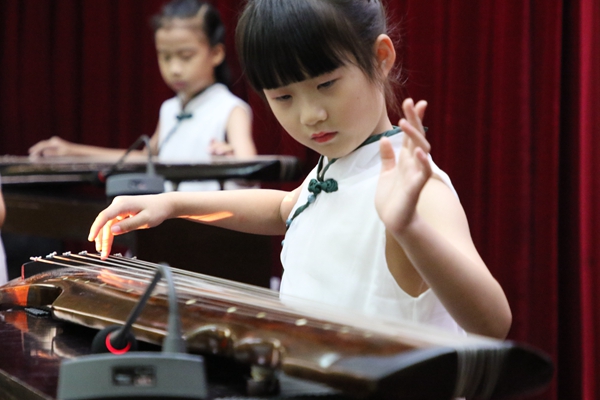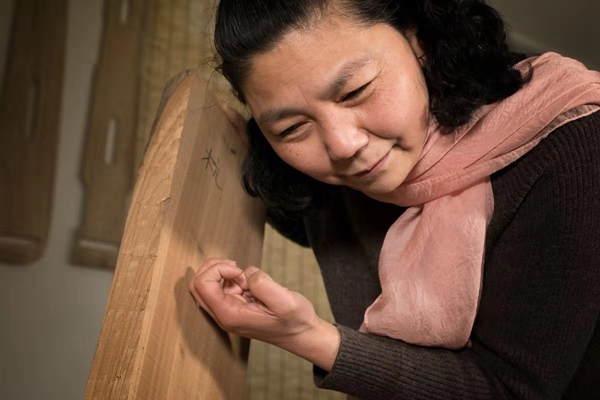
From the People's Daily App.
This is Story in the Story.
China has set up a nationwide intangible cultural heritage protection network comprising of almost 2,500 institutions and 17,000 personnel as of the end of 2018, according to a government report.
These institutions sponsored about 65,500 related performances and over 16,000 folk culture activities last year, attracting almost 98 million people, said a report from the Ministry of Culture and Tourism.
In 2018, over 1,000 individuals were newly recognized as artists with the responsibility of carrying forward the country's intangible cultural heritage.
The figure brought the total number of national-level inheritors of intangible cultural heritage in China to 3,068.
The government earmarked 201 million yuan last year from the central budget to build 26 national facilities for the protection and utilization of intangible cultural heritage.
"The environment to inherit and develop intangible cultural heritage has significantly improved, and colorful intangible cultural heritages are blossoming in the garden of Chinese culture," said Li Jinzao, vice-minister of culture and tourism.
Today’s Story in the Story looks at the guqin, a traditional Chinese music instrument, and how its legacy is being preserved.

Chen Zilai, a 7-year-old student in Shimei Primary School in Changshu, Jiangsu province, performs in a guqin concert on Aug 29. (Photo: China Daily)
While the Yangtze Delta region, in general, is recognized as a center of guqin culture in China, Changshu, a county-level city under the jurisdiction of Suzhou, Jiangsu Province, is the official hometown of this music.
Today, the guqin is widely taught and played in Changshu where programs are held in local schools and at educational centers for the elderly.
Wang Feng, a veteran guqin educator, performed alongside her students at a summer roundup recital in Changshu. Among her students were children as well as grown-ups.
"Some have come from Yunnan Province in southwestern China, and there used to be students from Japan and the United States," she said at the Museum of the Yushan School of Guqin Art in downtown Changshu.
Children usually start at the age of 6 or 7, when their fingers are firm enough to pluck the strings, which are traditionally made of silk and now steel, she said. The strings were changed to steel in the 1960s and helped the guqin to produce louder sounds and stronger expressions.
Learning to play helps children to concentrate and improve patience and discipline. Also, the practice helps to introduce classical Chinese art and literature to children at a young age. Wang said she has found that the number of adult learners is also growing.
Over the past few years, culture clubs have mushroomed all over the country, where tai chi, calligraphy, ink painting, tea ceremonies, and other traditional arts and crafts are practiced. Guqin is a popular subject. However, it is difficult for adults to master the techniques.
"They have too many errands to run. They're too busy with work and have too many distractions. They often give up after a while," Wang said.

Ji Lijuan, a guqin player and maker, shows how she selects wood and makes the instruments. (Photo: China Daily)
The process of creating a guqin is shown at the Yushan museum. The instrument consists of a sound box made using two pieces of wood-usually cedar on the top and catalpa on the bottom. Simple as it sounds, the characteristics of the sound are achieved through the quality of the wood and interior structure.
That is why "you can buy a basic-level instrument mass-produced in factories, but instruments handmade by master artisans can cost more than 100,000 yuan," Wang explained.
Ji Lijuan is a guqin player and maker. She's a founding member of the new Yushan School of Guqin Art (started in 1984) and is dedicated to the techniques of making the instrument. Her studio sits at the foot of the Yushan hills in Changshu.
"We use old wood, because after decades of aging, the structure is stable and reliable," Ji said. Each guqin has a "personality,” and experienced musicians have unique preferences that can't be satisfied through standard mass production, she added.
Chinese museums hold guqin instruments named after their makers. It is believed the instrument was introduced to Changshu in the Warring States Period (475-221 BC).
The instrument represents the aesthetics of ancient Chinese literati. Guqin playing was an elite art practiced by intellectuals for its refinement and subtlety.
"My ambition is to make the best instrument I can, and hopefully it will survive after I pass away," Ji said.
(Produced by Nancy Yan Xu, Lance Crayon, and Brian Lowe. Music by: bensound.com. Text from China Daily and Global Times.)


